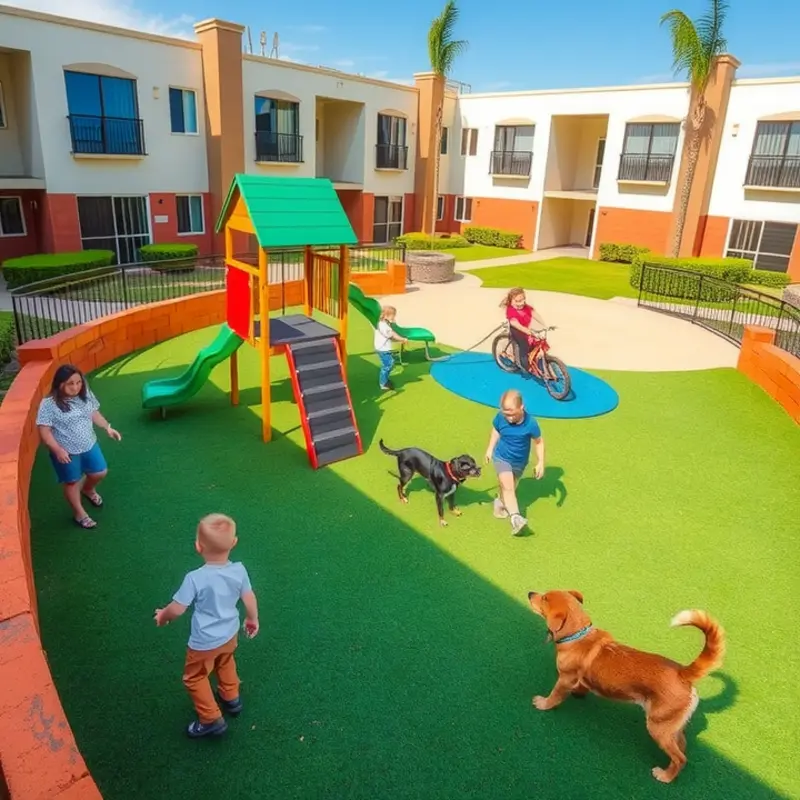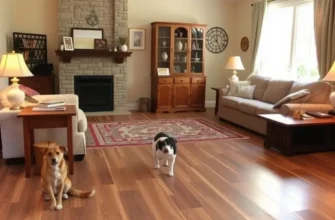Choosing an apartment that feels safe and welcoming for your family, pets, or partner is paramount. As urbanization increases, more families and couples find themselves living in apartments, raising questions about safety—especially concerning playground areas within those communities. From bustling cities to suburban developments, it’s essential to ensure these shared spaces are designed with safety in mind. Understanding how to evaluate the safety of apartment playgrounds will not only give you peace of mind but also create an environment where children can thrive and pets can roam safely. This guide will offer step-by-step advice and practical tips on what to look for when visiting apartments, ensuring you make informed decisions for your lifestyle. Whether you’re a family with children, a couple without children, or a pet owner, knowing what constitutes a safe play space is vital. Together, let’s explore ways to secure a joy-filled, worry-free home.
Evaluating Playground Safety Features: What to Look for

When selecting an apartment that prioritizes safety, playground features should be meticulously assessed. This involves examining the surface materials, safety barriers, and the play equipment available. Focus on these aspects to ensure a secure play environment for children and pets.
Surface Materials: Begin with the playground surface. Opt for materials that provide cushioning, reducing injury risks from falls. Popular choices include rubber mats, wood chips, or sand. Each material has its advantages; rubber mats are durable and low-maintenance, while wood chips offer a natural aesthetic. Ensure surfaces are maintained regularly to avoid potential hazards like splinters or hard spots.
Safety Barriers: Next, consider the safety barriers. These structures ensure children and pets remain within safe confines. Inspect for sturdy fences around the perimeter, ideally above four feet to prevent climbing or jumping over. Gates should have childproof latches or locks to restrict unsupervised access. Barriers not only secure the playground but also help in delineating spaces for different activities.
Play Equipment: Evaluate the play equipment, prioritizing quality and maintenance. Equipment should be made from durable materials, with smooth edges and secure fixtures. Items like swings should have soft seats and non-pinching chains. Slides should have guard rails, and climbing frames must be stable and free from sharp points.
Safety Certifications: Look for any available safety certifications the playground equipment may hold. These certifications indicate adherence to safety standards, providing peace of mind. Ask property management if the playground passes regular safety inspections and maintenance schedules.
Accessibility: Accessibility is essential for both children and pets. Consider how easily they can access the playground. Paths leading to play areas should be even, wide, and free from obstacles. This allows for smooth navigation for strollers and wheelchairs, ensuring inclusivity for children with disabilities.
By focusing on these various aspects of playground safety — from materials to design features — families, couples, and pet owners can rest assured that they’ve chosen a secure environment. Safe playgrounds contribute significantly to an enjoyable living space that supports a healthy lifestyle for all. For more insights on creating pet-friendly living arrangements, you might find “pet-friendly apartments” a useful resource.
Communicating with Management: Ensuring Ongoing Safety

Maintaining open communication with property management plays a crucial role in ensuring the safety and functionality of apartment playgrounds. By actively engaging with management, tenants can help identify safety issues, schedule necessary maintenance, and encourage a proactive approach to safety measures. Open dialogue not only helps in addressing concerns but also fosters a sense of community ownership.
Regular safety inspections are an essential aspect of maintaining a safe playground. These inspections should assess various elements, including equipment stability, surface conditions, and potential hazards. Tenants can inquire about the frequency of these inspections and suggest adjustments if more frequent checks seem necessary. Asking management to provide a clear maintenance schedule can also help ensure that repairs and updates occur promptly.
Maintenance schedules should be easily accessible to all residents. Transparency in this area can help build trust and accountability. If you notice outdated equipment or wear and tear that hasn’t been addressed, document your observations and share them with management immediately. Photos can serve as valuable evidence when requesting urgent repairs.
Changes in playground usage, such as an influx of new families or modifications in play equipment, might necessitate adjustments to maintenance routines. Regularly updating management on usage patterns can help identify if additional features are needed or if existing ones require more frequent maintenance.
To amplify tenant voices, consider forming a community safety committee. This group can collect feedback from families, couples, and pet owners regarding the playground, making it easier to present a united front to management. A structured approach can demonstrate the community’s commitment to a safe environment and encourage management to prioritize such requests.
Engaging in open forums or scheduled meetings with management can also be beneficial. These discussions provide an opportunity to address playground-related concerns directly. Ensure that such meetings focus on constructive dialogue, keeping the emphasis on community safety as a shared priority.
Additionally, providing management with resources or suggestions on playground safety can be effective. Resources might include national safety standards or innovative repair solutions. Offering these as part of a collaborative effort shows willingness to contribute positively rather than merely highlighting problems.
For those interested in learning more about fostering a collaborative relationship with their landlord or property management, resources such as questions to ask your landlord can provide additional insights.
Ultimately, fostering a proactive and collaborative approach to playground safety requires ongoing effort and involvement from all community members. With effective communication and regular engagement, tenants can play a pivotal role in creating safer, happier neighborhoods.
Final words
Ensuring safety in apartment playgrounds is a shared responsibility that involves thorough evaluations and open communication. By considering safety features and maintaining a dialogue with property management, families, pet owners, and couples can contribute to creating a nurturing environment for play. Parents can convey confidence, knowing their children play in a protected space while pets can enjoy outdoor freedom with ease. Use these insights to secure an apartment that prioritizes safety and comfort for everyone in your household. A safe playground not only enhances your living experience but also enriches the community.









